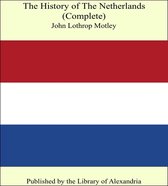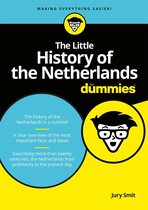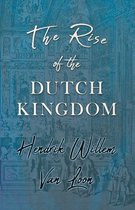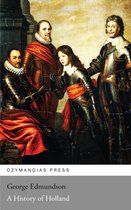The Story of Dutch Painting Ebook Tooltip Ebooks kunnen worden gelezen op uw computer en op daarvoor geschikte e-readers.
Afbeeldingen
Sla de afbeeldingen overArtikel vergelijken
- Engels
- E-book
- 9781465627292
- 24 februari 2021
- Adobe ePub
Samenvatting
ON the 25th of October, 1555, Charles V abdicated the imperial crown, ceding Spain and the Netherlands to his favorite son, Philip II. The event proved to be the prologue of a drama, which in its immediate aspects involved the decay of Spain and the growth of Holland, but in its wider significance was to be the beginning of a new era. For the modern world dates from the seventeenth century, and its pioneers were the Hollanders of that period. Practically everything that we recognize to-day as characteristic of the modern spirit in politics, religion, science, society, industry, commerce, and art has its prototype amid that sturdy people; being either the cause or the product of their struggle for independence and their self-development. Nor, in paying honor to the Dutch, need we attempt to suggest that they were the inventors of these characteristics. Most of the latter were, so to say, in the air. In the progress of things they had been evolved. But our debt to the Hollanders is that they attracted them and gave them practical application, and thus set the world upon a definite path of new progress. It is particularly with the newness of their art that we are here concerned, but we will try to study it in its relation to the material and mental environment of the nation itself, of whose newness it was so immediate a product and so manifest an expression. For it is in this way that the art of every country may be studied with most interest and profit. Although there will appear from time to time certain individual artists, whose genius cannot be satisfactorily correlated to its environment, but will indeed, as in the case of Rembrandt’s, seem to be actually contradictory to it, yet even they can be more fully comprehended through the very contrast that they offer to the mass of their contemporaries, whose relation to their environment is readily discernible. Apropos of this customary connection between the artist and the spirit of his time, may be quoted that phrase of Richard Wagner’s, that all great art is produced in response to a common and collective need on the part of the community. It may serve as an excellent touchstone for testing the quality of this new Dutch art which we are to study, so let us for a moment examine its face value, leaving the fuller application of its meaning to all the subsequent pages of this book. In Wagner’s mind great art, as he conceived it, stood out in clear contrast against a background of less art, of art which is produced in response to some more restricted impulse than that of a common and collective need of the people; for example, in catering to the whims of fashion. Such was the major part of the art of France produced in the last days before the Revolution. The great mass of the people were too abased by ill rule and exactions to have any consciousness but that of hunger, any common collective need but to fill their bellies. The only articulate demand to reach the artists was from the ephemeral swarm of courtiers, sycophants, and, as we should say to-day, “grafters,” who buzzed in splendor and profligacy at court. For a moment the glamour of this life inspired a great artist, Watteau, who, however, it is to be noted, was a foreigner. What he himself was he owed to Flanders. To him the glamour of the French court was but a pageant, a spectacle passing before his eyes, leaving his heart and conscience untouched. When, however, artists of French birth, reared in the home environment, followed in his steps, they revealed nothing of Watteau’s idealistic detachment from the grossness of the theme, but became purveyors to the shallow profligacy of their patrons. And to this day Van Loo, Boucher, and Fragonard have no place with other old masters in the hearts of the people; they are still the favorites of fashion.
Productspecificaties
Inhoud
- Taal
- en
- Bindwijze
- E-book
- Oorspronkelijke releasedatum
- 24 februari 2021
- Ebook Formaat
- Adobe ePub
- Illustraties
- Nee
Betrokkenen
- Hoofdauteur
- Charles Henry Caffin
- Hoofduitgeverij
- Library Of Alexandria
Vertaling
- Originele titel
- The Story of Dutch Painting
Lees mogelijkheden
- Lees dit ebook op
- Android (smartphone en tablet) | Kobo e-reader | Desktop (Mac en Windows) | iOS (smartphone en tablet) | Windows (smartphone en tablet)
Overige kenmerken
- Studieboek
- Nee
EAN
- EAN
- 9781465627292
Je vindt dit artikel in
- Categorieën
- Taal
- Engels
- Boek, ebook of luisterboek?
- Ebook
- Beschikbaarheid
- Leverbaar
- Beschikbaar in Kobo Plus
- Beschikbaar in Kobo Plus
Waarom een wereldbollabel?
Artikelen met een wereldbol bezitten positieve eigenschappen vergeleken met soortgelijke artikelen, zoals bepaalde keur- of kenmerken op sociaal en ecologisch gebied.
Keur- of kenmerken
-
Digitaal boek
Onafhankelijk onderzoek toont aan dat als je meer dan 25 ebooks downloadt, dit een lagere milieuimpact heeft dan van fysieke boeken.
Kies gewenste uitvoering
Prijsinformatie en bestellen
De prijs van dit product is 4 euro en 99 cent.- E-book is direct beschikbaar na aankoop
- E-books lezen is voordelig
- Dag en nacht klantenservice
- Veilig betalen
Rapporteer dit artikel
Je wilt melding doen van illegale inhoud over dit artikel:
- Ik wil melding doen als klant
- Ik wil melding doen als autoriteit of trusted flagger
- Ik wil melding doen als partner
- Ik wil melding doen als merkhouder
Geen klant, autoriteit, trusted flagger, merkhouder of partner? Gebruik dan onderstaande link om melding te doen.








